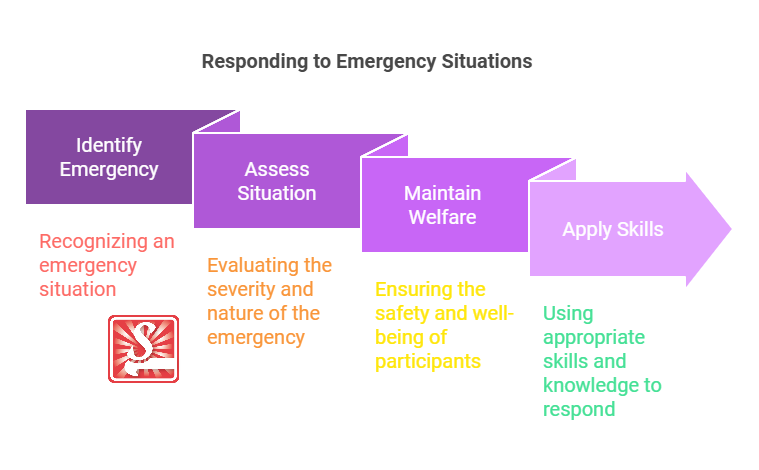Communication Systems in Responding to Emergency Situations
Posted by SkillMaker in Dec, 2024
What is a concise description of communication systems when responding to emergency situations?

Communication systems in responding to emergency situations are crucial mechanisms that facilitate the timely and accurate transmission of information during crises. These systems encompass a range of technologies and protocols designed to ensure that relevant information reaches emergency personnel, stakeholders, and the public effectively and efficiently.
Why do people in enterprises need communication systems when responding to emergency situations?
Enterprises need robust communication systems during emergency responses to ensure that critical information is disseminated quickly and accurately. Effective communication helps coordinate response efforts, reduces panic, prevents misinformation, and enhances the overall effectiveness of emergency management. It is essential for safeguarding personnel, securing assets, and maintaining operational continuity.
“Effective communication systems are the backbone of emergency response, enabling swift coordination, informed decision-making, and public reassurance during a crisis.”
What are the key components or elements of communication systems in emergency situations?
Key components of communication systems in emergency situations include:
- Communication Protocols: Established guidelines for information transmission.
- Redundancy: Backup systems to ensure reliability.
- Technology Integration: Use of mobile radios, satellite phones, and digital communication platforms.
- Training: Personnel preparation on communication tools and protocols.
- Public Information Management: Systems for timely and accurate public updates.
What key terms, with descriptions, relate to communication systems in emergency situations?

Registered Trademark®
- Interoperability: The ability of diverse systems and organizations to work together seamlessly.
- Incident Command System (ICS): A standardized approach to command, control, and coordination of emergency response.
- Communication Continuity: Ensuring communication persists regardless of circumstances.
- Network Resilience: The ability of a network to maintain operations in the face of disruption.
- SitRep (Situation Report): Regular updates on the current status of an emergency.
Who is typically engaged with operating or implementing communication systems in emergency situations?
Roles such as emergency managers, communication officers, IT specialists, and public information officers are typically engaged in establishing and operating communication systems during emergencies. These individuals work together to ensure that communication remains effective, secure, and accessible throughout the emergency management process.
How does this topic align or integrate with other components of Sport and Recreation?

Communication systems in emergency situations connect closely with risk management practices within the Sport and Recreation sector. Coordinated communication ensures that risks are promptly identified, assessed, and addressed, while also facilitating team management, training, and safety protocols essential for maintaining a secure environment.
Where can the student go to find out more information about communication systems in emergency situations?
- Emergency Management Australia
- Australasian Fire and Emergency Service Authorities Council
- AS Standards for Emergency Management
What job roles would be knowledgeable about communication systems in emergency situations?
Roles include:
- Emergency Management Coordinators
- Communication Specialists
- IT Support Personnel
- Public Information Officers
- First Responders
What are communication systems in emergency situations like in relation to sports, family, or schools?

In sports, effective communication systems during emergencies resemble a well-coordinated team strategy where every member knows their role. In family settings, it parallels the clear and open lines of communication needed to manage a household crisis efficiently. In schools, it represents the system of alert and information dissemination that ensures students’ safety and well-being.
(The first edition of this post was generated by AI to provide affordable education and insights to a learner-hungry world. The author will edit, endorse, and update it with additional rich learning content.)


 Post Tagged with
Post Tagged with